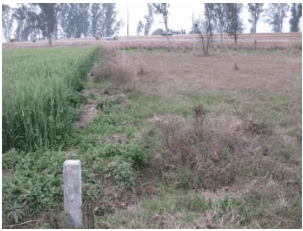
Please find below an interesting article from David Collyer entitled Englobo, published yesterday on the Prosper website. The article discusses the practice of land banking and land speculation on Melbourne’s fringe. Enjoy!
______________________________________________________________________________________
Let me introduce you to a beautiful word that loops off the tongue, sweet soft and round. Englobo.
It is “an undeveloped lot, group of lots or parcel of land that is zoned to allow for, and capable of significant subdivision into smaller parcels under existing land use provisions.”
Land developers are an odd bunch. Always sniffing around local government trying to juggle a swift rezone, braying to the world about how every quick and sharp subdivision is an ‘Estate’ and every estate somehow a ‘Master Planned Community’, whining about the ‘red tape’ introduced to stop previous abuses, constantly calculating which infrastructure project will be approved next by government and whether it will deliver them an unearned capital gain.
Residential subdivision is a game for the very patient. From a developer’s point of view, the ideal is to buy cow paddocks ahead of rezoning, quietly sit on it for a few years while the city grows out around it and infrastructure develops, manage a subdivision plan through a compliant council, build roads and pipes and then dribble it out to builders and buyers, lot by lot.
Sharemarket-listed developers are a minority of developers. Their lot sales last year were around a tenth of building approvals, but their behavior is publicly visible – and instructive.
| Lots settled | Lots in development | Disclosed end value | Average lot value | Years of supply | |
| 2011/12 | No | $ Billions | ’000 | ||
| Australand | 1108 | 21 300 | 8.0 | 531 | 19.2 |
| Sunland | 672 | 2 889 | 1.1 | 380 | 4.3 |
| PEET | 2 052 | 34 000 | 6.2 | 182 | 16.5 |
| Mirvac | 1 807 | 29 787 | 10.6 | 356 | 16,5 |
| FKP | 410 | 4 725 | 1.4 | 287 | 11.5 |
| Lend Lease | 2 059 2 | 68 006 | 13.0 | 191 | 33.0 |
| Stockland | 5 388 | 87 900 | 23.0 | 338 | 16.3 |
| Totals | 13 496 | 248 607 | 63 238 | 254 | Av 18.4 |
Source: ASX Company reports
The biggest by far is Stockland, followed by Lend Lease. The eye opener is the size of their landbanks – calculated as last year’s lots sold divided by lots in development. Lend Lease holds a staggering 33 years worth of undeveloped land; the average is 18.4 years. Estimated end value a massive $63 billion.
In one sense this is farsighted corporate behavior. In another, landbanking developers hold us to ransom by limiting supply to drive up prices. They have land – hundreds of thousands of lots in development – but choose to ration it.
All this causes trouble for government. They want to limit sprawl, yet they need to house a growing population. Developers sail happily between these competing objectives and make their unearned increment. Melbourne’s urban boundary has grown 96,775 hectares since 2003 in an attempt to curtail developer rationing. Sadly, this has not suppressed land prices and developer margins – another worthy government objective.
This selfishness can be changed by astute application of land tax. Broadacre land zoned residential ought be taxed as if it were already in use. Developers would turn their holdings as quickly as possible, rather than hoarding it.
Land in Australia should be dirt cheap. Outstanding access to land ought be a national advantage, generously conferred by a loving government upon the citizens it represents. And it could, with a decent Land Value Tax.
___________________________________________________________________________________
Leith here. For my own views on land banking, check out my December 2011 post, Why developers land bank. And for some possible solutions to the problem (in addition to tax reforms, such as introducing broad-based land value taxes), check out Look to Texas to solve Australian housing supply.

